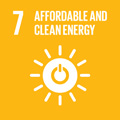- Docente: Riccardo Mandrioli
- Credits: 3
- SSD: ING-IND/31
- Language: English
- Teaching Mode: In-person learning (entirely or partially)
- Campus: Ravenna
-
Corso:
Second cycle degree programme (LM) in
Offshore Engineering for Energy Transition (cod. 6056)
Also valid for Second cycle degree programme (LM) in Offshore Engineering for Energy Transition (cod. 6056)
-
from Sep 15, 2025 to Nov 11, 2025
Learning outcomes
At the end of the course the student will have developed a basic background on electric energy conversion systems for offshore renewable sources, typical architectures and design criteria of offshore renewable power plants, technologies for electric energy transmission to the shore.
Course contents
- Power diodes and SCRs. Power electronic switches: MOSFET, IGBT, emerging components
- Pulse width modulation (PWM)
- AC/DC
- DC/DC
- DC/AC
- Off-shore DC corridors: multi-level inverters
- Considerations on floating photovoltaic installations
Readings/Bibliography
- Mohan, Undeland, Robbins: Power Electronics. J.Wiley & Sons
- Rashid: Power Electronics: Circuits Devices and Applications. Prentice Hall
- Kassakian, Schlecht, Verrghese: Principles of Power Electronics. MIT Addison-Wesley
Teaching methods
Classroom lectures.
Assessment methods
Written and/or eventually oral exam (interview).
Students with SLD or temporary or permanent disabilities: it is recommended to contact the responsible University office in good time (https://site.unibo.it/studenti-con-disabilita-e-dsa/en): it will be their responsibility to propose any adaptations to the students concerned, which must however be submitted, 15 days in advance, to the approval of the teacher, who will evaluate the opportunity also in relation to the educational objectives of the course.
Teaching tools
Lecture notes in English.
Office hours
See the website of Riccardo Mandrioli
SDGs




This teaching activity contributes to the achievement of the Sustainable Development Goals of the UN 2030 Agenda.
